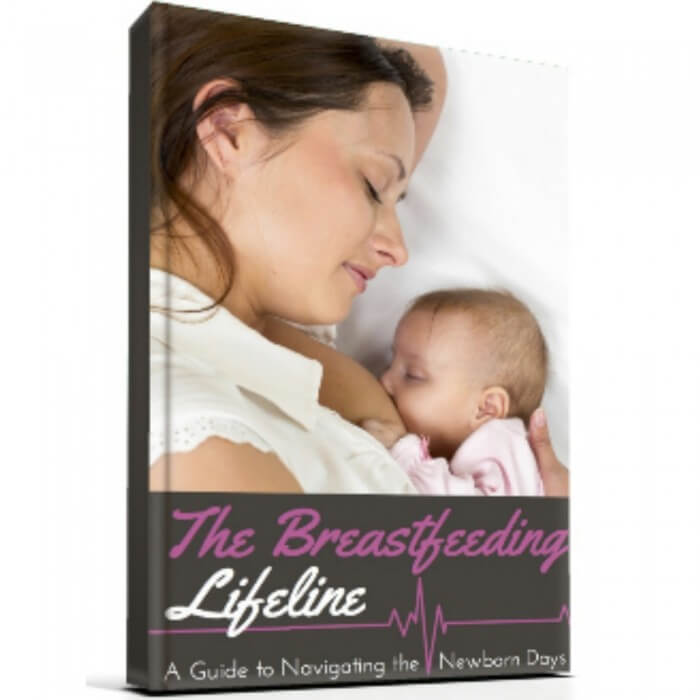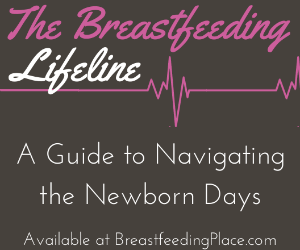 In the first part of this post, I shared a story of extraordinary breastfeeding obstacles, but now I come to the point in the story when we reached extraordinary success.
In the first part of this post, I shared a story of extraordinary breastfeeding obstacles, but now I come to the point in the story when we reached extraordinary success.
After both of my boys were released from the hospital, we settled into a routine at home. I was successfully breastfeeding Simeon, and he was gaining weight and thriving. JohnOwen was still fed by a tube from his nose to his intestine, and his stomach was completely unable to process food.
The first night at home he pulled the tube from his nose, and we found ourselves back in the hospital having it replaced.
Feeding from the Tube
After about a month at home we were finally able to see a specialist who ran a new test. Almost as if by a miracle, his stomach began working again! I pushed to have the formula replaced by breast milk, which I pumped.
Now his nutrition was from breast milk, and his stomach was working, but he was still fed by the tube. I don’t even like remembering, but we had to learn to place it in his nose and feed the tube down to his stomach. Each time we would carefully check the contents of the tube to make sure that it hadn’t been fed into his lungs by accident. I was too emotional for this duty, so my longsuffering husband would replace the tube each time JohnOwen pulled, sneezed, or spit it out.

Several times we tried taking out the tube and letting him have a go at eating on his own. His appetite was decent, and his suck and swallow reflex was developing well. But he would spit up nearly as much as he ate. Each time our home health nurse came, she sadly told us he had lost weight again. In would go the tube again.
We eventually realized that his stomach was so shrunken from months of sitting empty, that it would take a long time for it stretch back to a functioning size. And little by little it did.
Until finally we took out the tube and didn’t put it back. He was about 3 months old.
Losing Milk Supply
Now I would breastfeed Simeon, pump, and then bottle feed JohnOwen with the expressed breast milk and rice cereal (supposedly added to help him keep the food down). Both babies were growing and thriving. But the routine of pumping and feedings was time-consuming.
And I really wanted to breastfeed both of my babies.
Then I started running short on breast milk. I knew I could make enough milk for both the boys without supplementation, but I just couldn’t figure out how. Extra pumpings weren’t helping. So I called La Leche League. The advice I received was simply, “Get that baby back on the breast!” Your body doesn’t produce for a pump like it does for a baby actually sucking.
So, as simple as it sounds, I just started breastfeeding. No pumps, bottles, rice cereal, formula. Just me holding my little ones hearing their precious sighs and gulps, feeling their warm and contented little bodies, watching as they grew plumper and more alert. And everything they needed to thrive God gave to my own body to give to them.
We happily breastfed until the boys were 9 months old. Having overcome obstacles, breastfeeding was easy, convenient, and precious! We would have happily kept breastfeeding, but I was already two months pregnant…and, well, that’s another story.
8 Things I Learned During Extraordinary Breastfeeding Difficulties:
So, here’s what I learned through this whole experience. Hopefully a tip or two will help you!
- If you must pump for your baby, start as soon as possible the first day.
- If your baby is staying in the NICU, pump in the presence of your baby as much as possible (this encourages hormone responses that help with milk production).
- Don’t skip nighttime pumpings. Twice a night for at least the first 6 weeks and once a night after that. Nighttime prolactin levels are the highest, and this is key to milk production.
- While baby is in the NICU, hold him/her skin-to-skin as much as possible. Let baby “nuzzle” as a pre-breastfeeding exercise.
- While baby is in the NICU, try to give him/her one fresh milk feeding a day. “Fresh milk” goes directly from the pumping bottle to the baby without refrigeration. This feeding will provide baby with natural protection against the specific germs your body has been fighting that day.
- Just because baby doesn’t come home breastfeeding, doesn’t mean he/she can’t learn. Your baby can learn to breastfeed.
- Don’t let set-backs deter you. You can do it! Barring extremely rare medical conditions, if you’re determined to breastfeed, you can do it. If one solution doesn’t work, try another!
- Trust your God-given intuition. I’m not encouraging superstition or ignoring your physician’s advice, but remember that a doctor’s advice is just advice. You are the mother, and no one knows your baby like you do.







Speak Your Mind